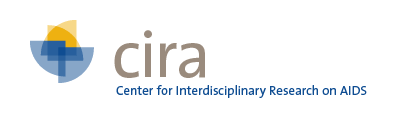| Title | Using observational data to emulate a randomized trial of dynamic treatment-switching strategies: an application to antiretroviral therapy. |
| Publication Type | Journal Article |
| Year of Publication | 2015 |
| Authors | Cain, Lauren E., Michael S. Saag, Maya Petersen, Margaret T. May, Suzanne M. Ingle, Roger Logan, James M. Robins, Sophie Abgrall, Bryan E. Shepherd, Steven G. Deeks, John M. Gill, Giota Touloumi, Georgia Vourli, François Dabis, Marie-Anne Vandenhende, Peter Reiss, Ard van Sighem, Hasina Samji, Robert S. Hogg, Jan Rybniker, Caroline A. Sabin, Sophie Jose, Julia del Amo, Santiago Moreno, Benigno Rodríguez, Alessandro Cozzi-Lepri, Stephen L. Boswell, Christoph Stephan, Santiago Pérez-Hoyos, Inma Jarrin, Jodie L. Guest, Antonella d'Arminio Monforte, Andrea Antinori, Richard Moore, Colin N. J. Campbell, Jordi Casabona, Laurence Meyer, Rémonie Seng, Andrew N. Phillips, Heiner C. Bucher, Matthias Egger, Michael J. Mugavero, Richard Haubrich, Elvin H. Geng, Ashley Olson, Joseph J. Eron, Sonia Napravnik, Mari M. Kitahata, Stephen E. Van Rompaey, Ramón Teira, Amy C. Justice, Janet P. Tate, Dominique Costagliola, Jonathan A. C. Sterne, and Miguel A. Hernán |
| Corporate Authors | Antiretroviral Therapy Cohort Collaboration, the CFAR Network of Integrated Clinical Systems, and the HIV-CAUSAL Collaboration |
| Journal | International journal of epidemiology |
| Date Published | 2015 Dec 31 |
| ISSN | 1464-3685 |
| Abstract | When a clinical treatment fails or shows suboptimal results, the question of when to switch to another treatment arises. Treatment switching strategies are often dynamic because the time of switching depends on the evolution of an individual's time-varying covariates. Dynamic strategies can be directly compared in randomized trials. For example, HIV-infected individuals receiving antiretroviral therapy could be randomized to switching therapy within 90 days of HIV-1 RNA crossing above a threshold of either 400 copies/ml (tight-control strategy) or 1000 copies/ml (loose-control strategy). |
| DOI | 10.1093/ije/dyv295 |
| Alternate Journal | Int J Epidemiol |


